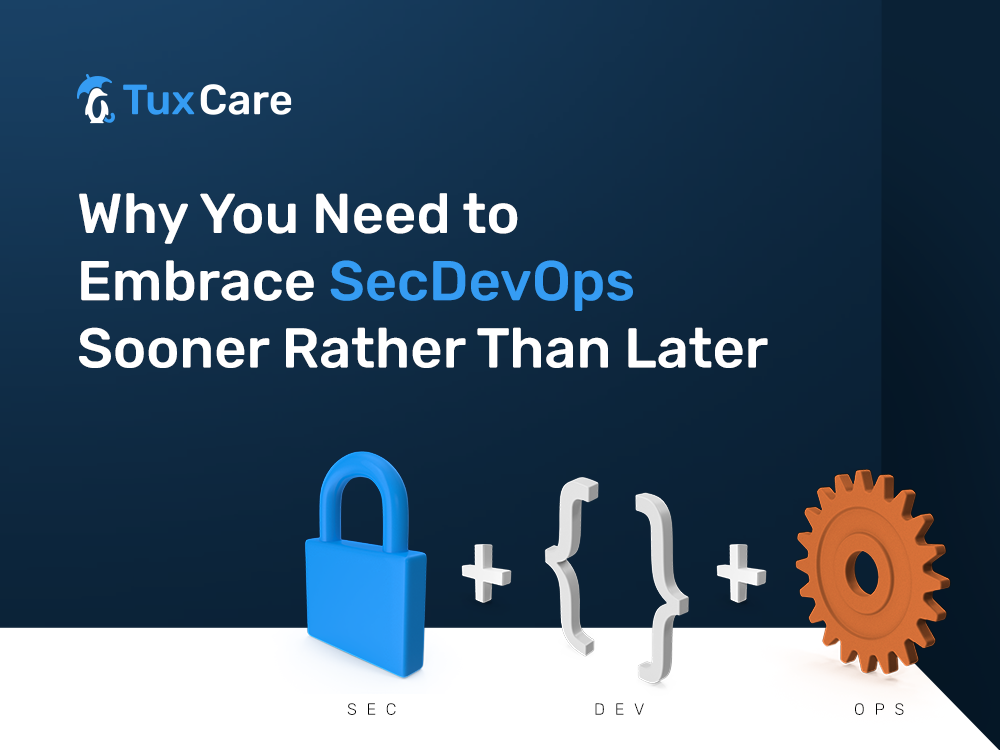Why You Need to Embrace SecDevOps Sooner Rather Than Later
Sometimes organizations must embrace evolution in the way things are done, whether it’s because a new approach has become standard practice or because of some event that serves as a catalyst for an improvement of the status quo – like a successful cybersecurity breach.
DevOps is one of those evolutions. It has been widely adopted in recent years because it offers so many tools that make it much easier to achieve development goals. Companies often ended up adopting DevOps because they found that their previous development framework just wasn’t getting the job done.
Today, DevOps is widely embraced, but it’s in the process of being superseded by yet another advancement called SecDevOps – and we think it’s only a matter of time before organizations on a large scale begin adopting SecDevOps out of necessity.
But how does SecDevOps differ from DevOps? Let’s take a look.
SecDevOps: The Basics
As the name suggests, SecDevOps builds on DevOps, but it’s not just about a single improvement. The Sec in SecDevOps modifies the entire DevOps development philosophy. Some might see it as simply a toolset, while others would consider it a culture.
Either way, SecDevOps is really a whole range of tools and methods that are wrapped up in a brand-new approach to development. The goal: to improve security right from the start by embedding security principles throughout the development process.
SecDevOps works on a few different layers. For example, with SecDevOps, developers rely on reproducible scenarios from the get-go. The security principles in SecDevOps also touch on system provisioning and deployment, building pipelines, and code management.
Organizations that deploy SecDevOps ensure that, at every level, all security issues are identified and corrected – and ideally predicted. Security enjoys priority: security is not left as a final thought once all development is completed. Instead, in this framework, security is the first concern a team thinks about when working on a project.
The Tools You Need to Put Theory into Practice
Cybersecurity risk is what drives the focus of the Sec in SecDevOps. The goal of this emphasis on security is to minimize these risks as much as possible. This includes building better vulnerability management capacity into the development workflow – which extends to improved patched management, including through live patching.
This focus matters, but taking a firm stance on security will only accomplish so much. You also need tools to support you. Your development environment will determine which tools are the best, of course, but some tools are useful and necessary in almost all environments.
You should include a monitoring tool that provides you with visibility into the inner workings of your newly deployed systems – ideally with as much granular detail as possible – and add it to the system as early in the process as possible.
Log consolidation is another indispensable tool that should always be considered – something to centralize logs taken from systems deployed anywhere to facilitate the identification of threats and trends in abnormal scenarios. This should also feed your SIEM system, another very important infrastructure-level tool.
If your toolset does not include special endpoint security tools, at least make use of built-in offerings like firewalls and change detection management tools that are commonplace in modern operating systems. Close anything that has no reason to stay open and track any system-level change at all times. Both are good steps in the right direction. More specialized tools will improve detail and provide more context.
Patch management is a tool that everyone needs. No matter which environment they work in, it’s critical to deploy a tool that can ensure consistency for patch management. It’s an important part of the SecDevOps approach as well.
To help organizations improve patch management, TuxCare offers an ePortal with a script-friendly API endpoint that makes it much easier to integrate KernelCare live patching into Linux workloads.
Thanks to the TuxCare API, developers have a simplified approach to integrating KernelCare, which means that KernelCare’s live patching can be implemented much earlier in the development process – making the development process far more secure. Our API endpoint is a good example of how automation can provide a much-needed security boost when adopting new development frameworks.
This automation also ensures that developers have easy access to key tools throughout the development process. For example, thanks to our API endpoint, developers can now integrate KernelCare as soon as a system is provisioned. On the flip side, it’s also easy to remove the tool when a system is deprovisioned.
Attain SecDevOps right now
SecDevOps is a clear win, as it translates to significantly improved security across the entire lifecycle of a solution. Locking in that win isn’t always an easy endeavor, so organizations need to take advantage of every tool they can get their hands on to make it happen successfully.
TuxCare’s tools make it remarkably easier to implement the secure development practices that underpin SecDevOps – and it doesn’t matter which DevOps toolset you use. Whether it’s Ansible, Chef, or Puppet, you can use the TuxCare ePortal API to help integrate KernelCare into your development workflow. We also provide code samples so that you can make use of the API even if you don’t use a standard DevOps toolset.
When it comes to SecDevOps, the question isn’t so much which toolset you use, but whether you use the tools you need to deliver SecDevOps into your development workflow. This includes going beyond the standard DevOps tools to include security-focused tools, like KernelCare. TuxCare’s API makes it easier than ever to adopt the SecDevOps framework and join the growing number of organizations making the transition.



 Documentation
Documentation Login
Login



